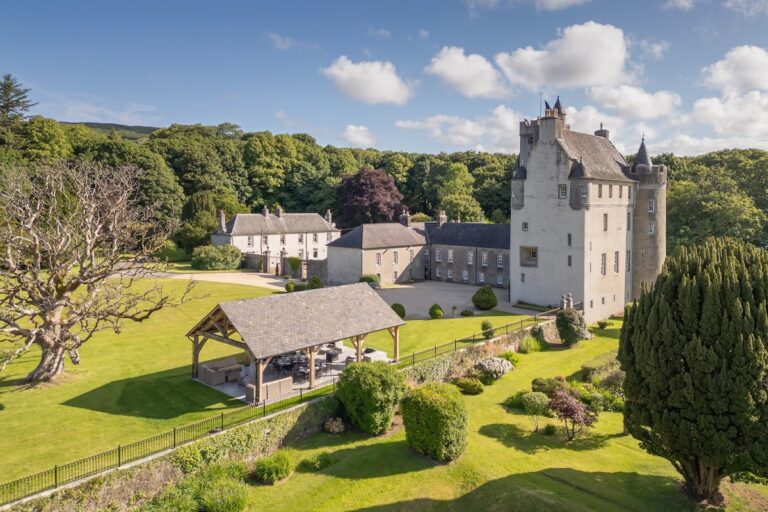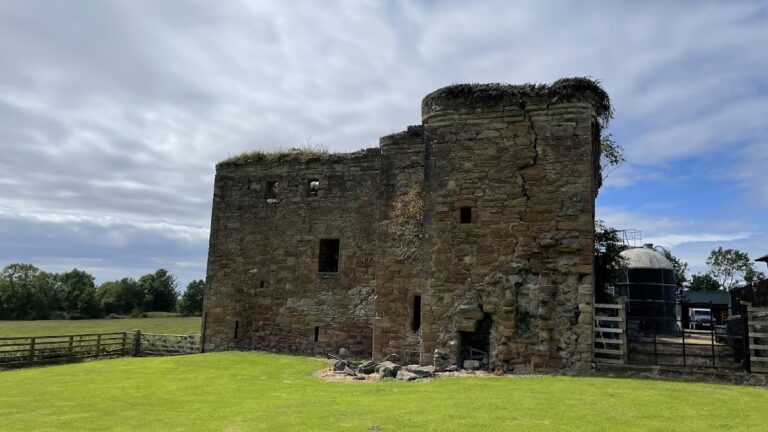Ardstinchar Castle: A 15th-Century Scottish Fortress near Girvan
Visitor Information
Google Rating: 3.8
Popularity: Very Low
Google Maps: View on Google Maps
Official Website: www.scotland.org.uk
Country: United Kingdom
Civilization: Unclassified
Remains: Military
History
Ardstinchar Castle is located near Girvan in Scotland and was constructed by the Scottish people during the mid-15th century.
The castle’s foundation is closely tied to Hugh Kennedy of Ardstinchar, a former Dominican friar who left religious life to become a mercenary leader during the Hundred Years’ War. Notably, he fought alongside Joan of Arc at the Siege of Orléans between 1428 and 1429. After returning to Scotland, Hugh likely inherited the surrounding lands from his brother Alexander. He also combined these estates with those of another brother, Thomas, creating the Barony of Ardstinchar. Hugh retained a lifetime interest in the estate until his death in 1454.
For more than a century, Ardstinchar Castle remained under the Kennedy family’s ownership. During this period, it hosted distinguished royal guests. James V of Scotland is recorded to have visited in 1529, and Mary, Queen of Scots stayed there in 1563. Historical accounts note that Mary may have walked along the half-turret walkway which endures in the castle ruins today.
A long-standing conflict between the Kennedy clan and the Cassillis family, rooted in the time of Hugh Kennedy, escalated over decades. This feud culminated in 1601 with the murder of the last baron holding the title of Bargany and Ardstinchar. Following this violent episode, ownership of the estate passed to Sir John Hamilton of Letterick, son of the first Marquis of Hamilton.
By the late 18th century, the castle had fallen into disuse and decay. Around the 1770s, it was dismantled and its stonework repurposed for other construction projects, including a distinctive three-arched bridge spanning the nearby River Stinchar. Additionally, materials from the castle contributed to several buildings in the town of Ballantrae, among them a public house known today as the King’s Arms Hotel. In modern times, the site of Ardstinchar Castle has been granted protection as a scheduled monument.
Remains
Ardstinchar Castle was originally designed with a distinctive wedge-shaped layout, resembling a segment of a circle. This enclosed courtyard was formed by three square towers connected with battlemented walls, creating a fortified enclosure. The gatehouse stood on the north side, serving as the main entrance, while the keep—a central stronghold—was positioned inside the southeast corner of the courtyard, adjoining a long hall house that likely functioned as living and administrative space.
Today, the most prominent surviving structure is the main tower of the keep. It measures approximately 8.7 meters by 6 meters, with walls about 1.1 meters thick, and reaches around 15 meters in height from its base. While the remains of the other two towers are much smaller and fragmented, their original sizes cannot be determined with certainty. The courtyard walls display variation in thickness, ranging from 1 to 1.6 meters, reflecting their defensive purpose.
Defensive measures included rock-cut trenches surrounding parts of the castle. To the northeast of the courtyard wall lies a trench carved directly into the rock, measuring 8 meters wide and 1.5 meters deep. An additional shallower trench protects the western side of the enclosure. These earthworks would have made direct assault on the walls more difficult.
The castle stands on a rocky hilltop near the mouth of the River Stinchar, a strategic position that offered commanding views of the surrounding landscape. Among the ruins, the half-turret walkway mentioned in historic accounts is still visible, providing a tangible link to the castle’s past inhabitants and visitors. While the castle itself no longer serves its original purpose, its remains convey the scale and character of a 15th-century Scottish fortress.







